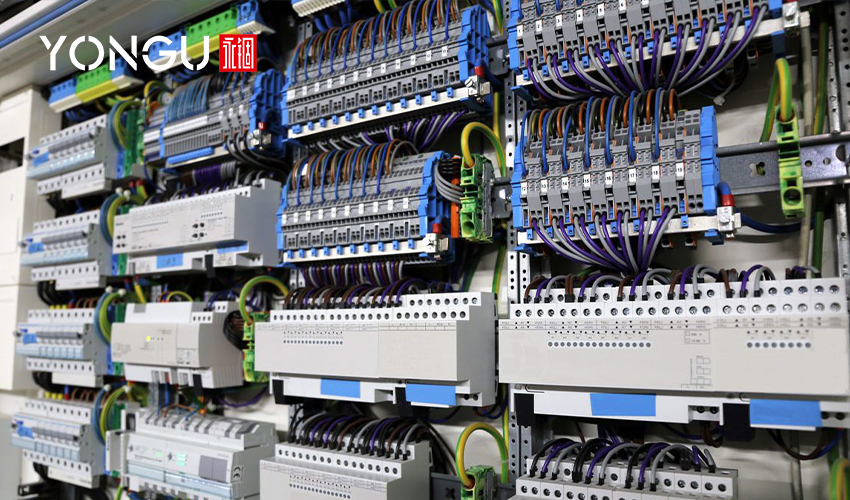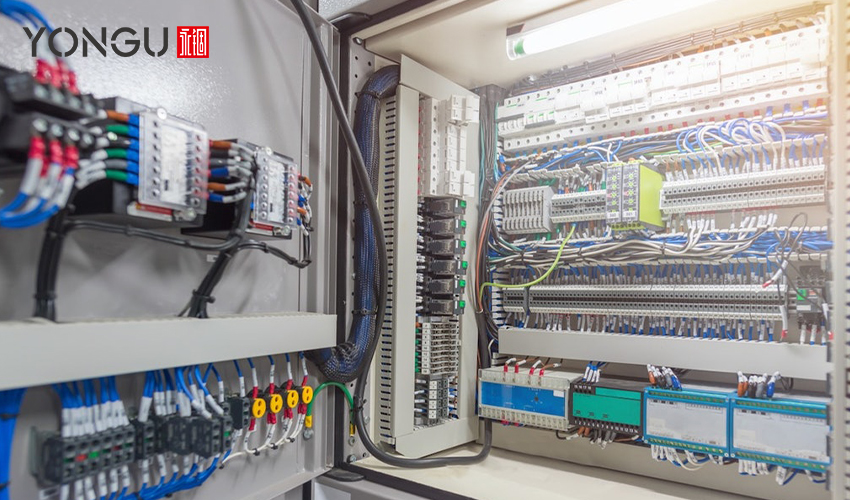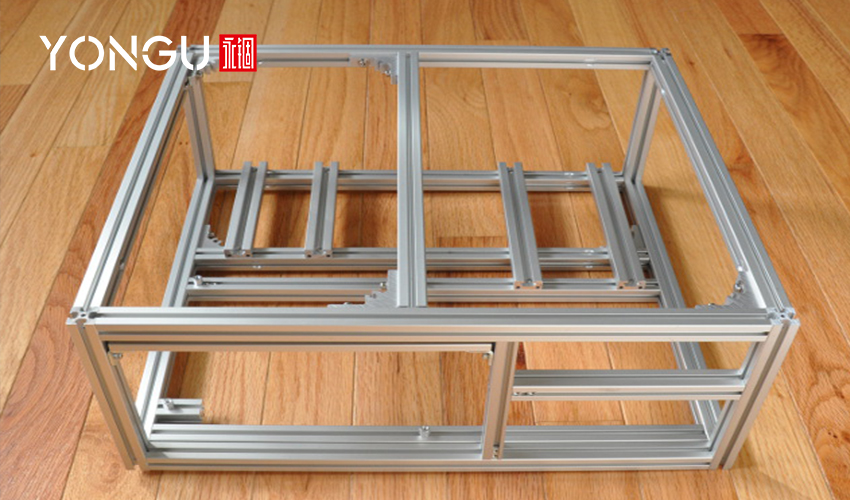Работа ПЛК
Данные поступают в программируемый логический контроллер, который оценивает их и затем генерирует необходимые выходные данные на основе параметров программы, которая в него подается. На основе входов и выходов ПЛК может легко отслеживать и вести журнал времени выполнения температур, выхода продукции, оповещений о срабатывании и т. д. ПЛК можно адаптировать к системам управления промышленными процессами, которые могут использоваться в различных контекстах.

Аппаратное обеспечение ПЛК
Аппаратное обеспечение ПЛК состоит из следующего:
Центральный процессор (ЦП)
Модуль ЦП состоит из основного процессора, памяти ПЗУ и ОЗУ. ПЗУ содержит ОС, периферийные устройства и приложения. ОЗУ хранит данные и приложения. ПЛК имеют восьмиугольные или шестиугольные ЦП. Этот ЦП заменяет таймеры, реле и счетчики. ЦП получает данные датчиков, анализирует их и выдает команды управления.
Память
В то время как оперативная память (ОЗУ) хранит информацию об устройствах ввода и вывода, таймерах, регистрах и других внутренних устройствах, системное ПЗУ хранит данные, которые фиксируются постоянно и необходимы ЦП.
Модуль ввода/вывода
Модуль ввода-вывода — это уникальный модуль для соединения входов и выходов в ПЛК.
Входное устройство передает и контролирует сигналы данных на процессор. Они могут включать в себя сенсорные устройства, концевые выключатели, датчики приближения и т. д.
Устройства вывода — любые устройства, используемые для передачи результатов обработки данных и перевода информации в понятную форму. К ним могут относиться двигатели, насосы, вентиляторы и т. д.
Микропроцессор может эффективно взаимодействовать с устройствами ввода и вывода с помощью модуля ввода/вывода.
Модуль интерфейса связи
Используя адаптивные модули ввода/вывода, данные передаются между ЦП и сетями связи. Удаленные ПЛК и ПК могут быть связаны с помощью этих модулей связи.
Источник питания
Для питания всей системы ПЛК необходим этот модуль. Он охватывает механизм преобразования переменного тока в постоянный ток и затем понижает его до требуемого напряжения. Источник постоянного тока 24 В питает большинство ПЛК. Изолированные источники питания редко встречаются в ПЛК.
Типы ПЛК
Компактные и модульные ПЛК — это два типа программируемых логических контроллеров.

Компактный ПЛК
В один корпус будет включено множество различных модулей. Он поставляется с предопределенным количеством модулей ввода/вывода и дополнительными картами ввода/вывода. Поэтому у него нет опциональной емкости для расширения модулей. Производитель будет иметь полный контроль как над входами, так и над выходами.Модульный ПЛК
Он относится к типу ПЛК, который позволяет реализовать различные расширения с помощью «модулей». Можно добавлять больше компонентов ввода-вывода. Поскольку один компонент может функционировать независимо от других, его гораздо проще использовать.ПЛК в робототехнике
Когда впервые появился программируемый логический контроллер (ПЛК), он символизировал начало новой эры в производстве. Больше и более качественных изделий производилось по более низкой цене, поскольку процессы на заводе стали более автоматизированными, точными и менее затратными. Современные технологии изменили то, как ПЛК используются в различных секторах.
ПЛК — это мозг промышленных роботов, диктующий, как и когда они выполняют свою работу. Подобно дирижеру филармонического оркестра, ПЛК дирижирует «симфонией» роботов. Все они работают вместе ради общей цели или продукта или завершают процесс, следуя инструкциям ПЛК.
ПЛК сами по себе являются элегантными произведениями искусства. Когда дело доходит до защиты от жары, влажности и вибрации в промышленной среде, алюминиевые сплавы Y ONGU играют решающую роль из-за их низкой плотности, высокого соотношения прочности к весу, превосходной коррозионной стойкости и сравнительно низкой стоимости по сравнению с композитами.
Традиционные роботизированные приложения связывают машину с внешним ПЛК. Поскольку все больше заводов и складов используют робототехнику в своих операциях, они должны решить, как ею управлять. OEM-производители поставляют собственный тесно интегрированный контроллер; однако новые достижения позволяют управлять ПЛК. Интеграция роботизированного управления внутри ПЛК может быть предпочтительнее использования фирменного контроллера OEM на объектах, которые в настоящее время используют ПЛК для управления другими машинами.
Система робота на базе ПЛК не нуждается в обучении специализированному языку OEM-операций, поскольку большинство инженеров и техников уже знакомы с ПЛК. Для эксплуатации, обслуживания и управления роботизированными системами операторам все равно придется понимать, как работают роботы, но использование существующего опыта работы с ПЛК значительно сокращает время обучения. Следующие общие характеристики ПЛК делают их еще более эффективными:
- Программирование элементов управления
- Интерфейсы программного обеспечения
- Программа резервного копирования
- Документация программы
Системная интеграция роботов и нероботизированных компонентов является обычной для роботизированной обработки материалов. Для предполагаемой функциональности роботизированные контроллеры должны взаимодействовать с алгоритмом управления, данными межпроцессной связи и механизмами безопасности, поскольку ПЛК часто управляют нероботизированными компонентами системы. Взаимодействие различных модулей управления в сложном приложении может быть сложной задачей.
Поскольку связь между различными системами управления устраняется, сложность системы значительно снижается, когда один ПЛК управляет роботами и другими связанными компонентами. OEM-производители и конечные пользователи получают выгоду от снижения затрат на интеграцию и разработку, когда различные процессы и оборудование управляются одним контроллером, что может увеличить доход в долгосрочной перспективе.

Архитектура общего управления
С контроллерами роботов на базе ПЛК обычное автоматизированное оборудование и роботы могут управляться с того же интерфейса, что и другие машины объекта. Номенклатура чертежей, такая как нумерация проводов, должна соответствовать другим устройствам на той же панели управления при проектировании контроллера робота. Ниже приведены дополнительные преимущества унифицированной архитектуры управления:
- Техническое обслуживание и диагностика теперь стали намного проще.
- значительно меньшая общая площадь панели.
- Оптимизированное обучение.
- Обычные запасные части.
- Стандартный метод присвоения номеров компонентам.
Большинство фирменных коммуникаций ввода-вывода OEM-контроллеров включают интеграцию с ПЛК. Роботизированные элементы управления на основе ПЛК избегают этой ненужной коммуникации, но подключаются к вводу-выводу робота, что является простой процедурой. Роботизированные элементы управления на основе ПЛК упрощают коммуникацию ввода-вывода и позволяют операторам использовать оборудование ПЛК, ввод-вывод и протоколы связи вместо контроллеров OEM.
Общий интерфейс
Вместо использования обучающего пульта для связи с контроллером робота, система управления роботом на основе ПЛК обеспечивает стандартизированный интерфейс человек-машина. Теперь все возможности HMI, такие как сигналы тревоги, регистрация неисправностей, отслеживание в реальном времени и т. д., могут напрямую взаимодействовать с системой управления робота. Отдельные ошибки и индивидуальные процедуры могут быть добавлены или изменены непосредственно через контроллер робота. Для интерфейса HMI требуется меньше обучения оператора, поскольку он более специфичен для приложения и имеет более гибкую структуру.
Сокращение затрат на обслуживание и модернизацию
Добавки, крекеры, паллетизаторы, обертки и конвейеры часто контролируются ПЛК на производственных объектах, которые включают несколько типов машин. Техническое обслуживание и модернизация интегрированной системы может стать головной болью, если каждый OEM предоставляет свою схему управления. В результате большинство запросов на предложения для производственных объектов ограничивают контроллеры и оборудование, которые могут использовать OEM.
Общая стоимость владения может быть снижена за счет использования единой системы управления, которая упрощает обновления и обслуживание. В этом отношении использование системы управления на основе ПЛК в робототехнике приводит к снижению стоимости владения за счет экономии средств конечным пользователям на отдельную конструкцию управления роботом.
Улучшение совместимости
Многочисленные промышленные робототехнические операции предпочитают придерживаться своего текущего бренда, учитывая сложную природу интерфейсов OEM-роботов и необходимость обучения. Компании часто не решаются поддерживать различные бренды роботов или подключать различные контроллеры OEM, что не позволяет им выбрать наиболее подходящую модель робота. Конечные клиенты больше не «заперты» при выборе последующих решений благодаря контроллерам роботов на основе ПЛК.
Контроллеры роботов на базе ПЛК предоставляют интеграторам дополнительные возможности. Из-за значительной клиентской базы и особых потребностей приложений маловероятно, что такие интенсивно используемые роботы, как автомобильный сектор, перейдут от использования контроллеров OEM. Некоторые производители роботов не предоставляют метод подготовки для контроллера на базе ПЛК.
При выборе роботизированного контроллера операционному отделу необходимо учитывать стоимость, доступность и функциональность каждого варианта.
АЛЮМИНИЕВЫЕ КОРПУСА YONGU ELECTRONICS
Теперь рост робототехнической отрасли во многом обязан развитию алюминия, начавшемуся в середине 20-го века и продолжающемуся в дальнейшем. Область робототехники не была бы там, где она есть сейчас, если бы не такие качества, как прочность, долговечность, срок службы, портативность и гибкость, которые предлагает алюминий.
Помимо использования в различных роботизированных компонентах, алюминий необходим в автоматизированном производстве. Алюминий помогает давать ответы в ситуациях, когда другие материалы не могут этого сделать, начиная от небольших обработанных деталей до массивных автоматических машин и даже роботов, используемых для их производства.
Алюминиевые корпуса YONGU позволяют производителям и проектировщикам максимально эффективно использовать товары и проекты, над которыми они работают, максимально раскрывая их потенциал.
Пластиковая крышка коробки YONGU Eletrical K21C 160*55 мм
На выбор предлагается 23 модели, включая следующие характеристики.
- K01A-K05A, полностью пластиковые защитные крышки.
- K01B-K05B, полузащищенные пластиковые крышки с алюминиевыми торцевыми панелями.
- K06-K10, полузащищенные пластиковые торцевые крышки.
- K11-K23, настенный фланец, можно использовать наклейку вместо печати.
Структура и основные характеристики
- Хорошая теплоотдача, простота сборки.
- Размеры, сверление отверстий, обработка поверхности, печать и т. д. могут быть изменены по индивидуальному заказу.
- Прочный и надежный для интенсивного использования.
- Пылезащищенный, прочный и может использоваться в течение длительного времени.
- Алюминиевый материал хорошего качества, AL6063 и AL5052.
- Проводимость достигается за счет контактов между необработанными внутренними поверхностями.
Для получения дополнительной информации и индивидуального продукта по вашим требованиям, пожалуйста, подпишитесь на нашу страницу в FACEBOOK для получения дополнительных обновлений и информации: https://www.facebook.com/Foshan-Gof-Electronic-Machine-Co-Ltd-104706631749290
Вы также можете связаться с нами по телефону +86 13326782625 или написать нам по адресу [email protected] .



